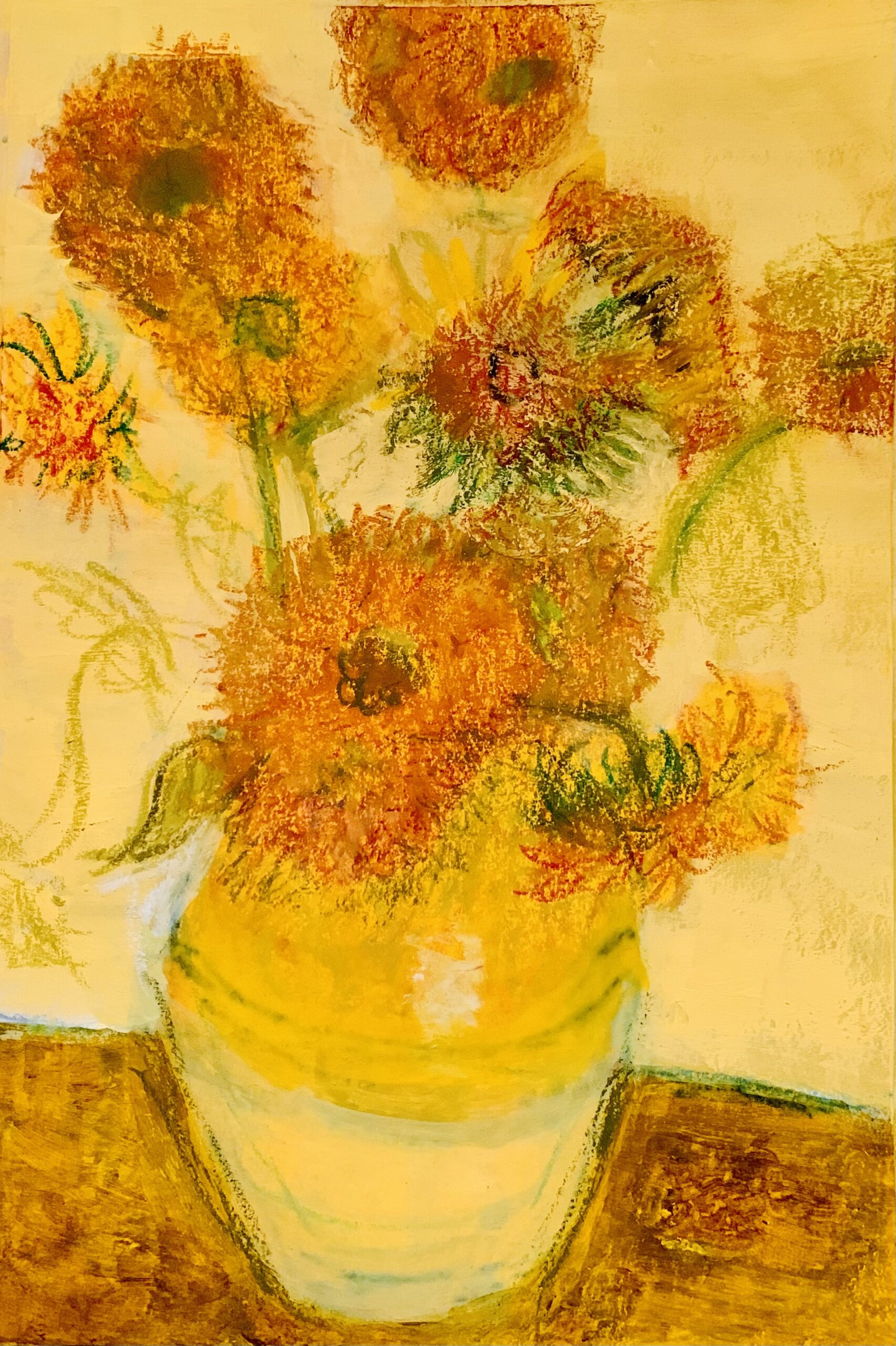Impasto with Crayons
Vincent van Gogh’s iconic impasto technique, where thick, textured strokes of paint create dynamic, expressive surfaces, is one of the most recognizable elements of his work. But what if you could replicate that rich, tactile texture without a paintbrush? Enter wax pastels. These vibrant, smooth-to-apply crayons can be used to mimic the swirling, dramatic strokes found in Van Gogh’s masterpieces.
Wax pastels, or crayons, offer a unique advantage in recreating impasto textures: their density and ability to layer create a physicality that mimics paint’s thickness.
Neocolor II by Caran d’Ache is ideal to use for this activity. Its buttery texture and vivid, rich pigment load plus its ability to be used with water allows artists to blend and create texture in a variety of ways to create depth and dimension.
Start by choosing bold, rich colors—like vibrant yellows and deep blues—and layer the wax pastels in thick, confident strokes. Use a palette knife or a flat tool to build up the texture, applying the wax in short, broken lines similar to Van Gogh’s impassioned brushwork. The wax will hold the shape, allowing you to create a sense of depth and movement that mirrors his expressive approach.
While the tactile nature of the medium can’t perfectly replicate the feeling of oil paint, the rich, textured results achieved with wax pastels can bring a fresh twist to your homage to Van Gogh’s work. It’s an exciting fusion of traditional techniques and modern materials, allowing artists to dive into the world of impasto without needing to get their hands too messy!
Statement of Inquiry
Exploring the expressive potential of pastels to create texture and depth in a still-life composition, inspired by Van Gogh’s iconic Sunflowers series, offers an opportunity to understand how materials influence the emotional impact and texture of artwork.
Related Concept:
Materials and Techniques – How different media, such as pastels, can alter the texture, form, and emotional response of a piece of art.
Global Context:
Personal and Cultural Expression – Investigating how artists from different cultural backgrounds and time periods use materials and techniques to convey personal or collective meaning.
Activity:
- Introduction to Van Gogh’s Sunflowers
Begin by examining Van Gogh’s Sunflowers series and the emotions conveyed through the vibrant colors and dynamic brushstrokes. Discuss the impasto technique he used to create texture. - Pastel Technique Exploration
Introduce the medium of pastels, emphasizing how this technique can replicate or suggest texture and vibrancy in the absence of impasto. Demonstrate blending and layering techniques using soft pastels on textured paper to achieve the desired effect of depth and volume. - Creating the Artwork
Students will create their own still-life of sunflowers using pastels. Focus on blending to create rich, textural effects in the petals and leaves, allowing the pastel marks to convey movement, depth, and texture similar to Van Gogh’s impasto technique but using the softness of pastel rather than thick oil paint. - Critique and Reflection
Hold a group critique, discussing how the material choice (pastels) influenced the visual outcome and emotional tone of the artwork compared to Van Gogh’s original approach. Encourage reflection on the process and its connection to the study of texture in art.
Inspiration:
- Artists:
- Vincent van Gogh’s Sunflowers series – explore how he used impasto to create texture and depth.
- Contemporary pastel artists such as Gwen Fox or Dominique Blais who use pastels in a manner that highlights texture, blending, and luminosity.
- Museums & Links:
- Van Gogh Museum, Amsterdam (https://www.vangoghmuseum.nl/en) – Explore the Sunflowers and other works by Van Gogh for in-depth understanding of his technique.
- The Metropolitan Museum of Art (https://www.metmuseum.org) – View pastel works and explore the differences between various media.
- Pastel Society of America (https://www.pastelsocietyofamerica.org) – Find examples of pastel artworks and resources for technique exploration.
This activity encourages students to make connections between materials, techniques, and artistic expression, enhancing their understanding of how art can convey emotion through texture and form.








